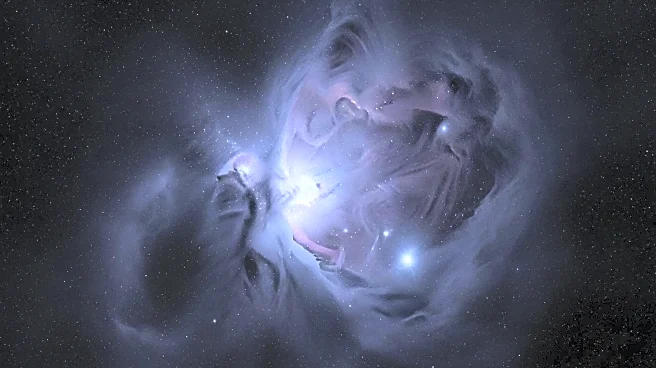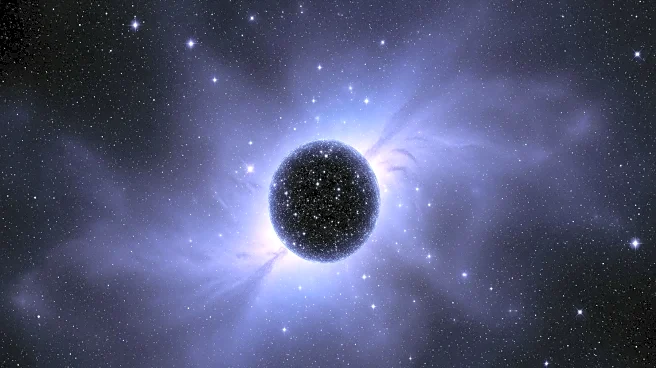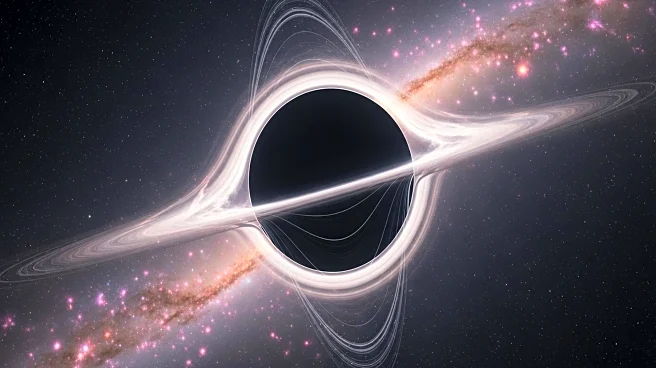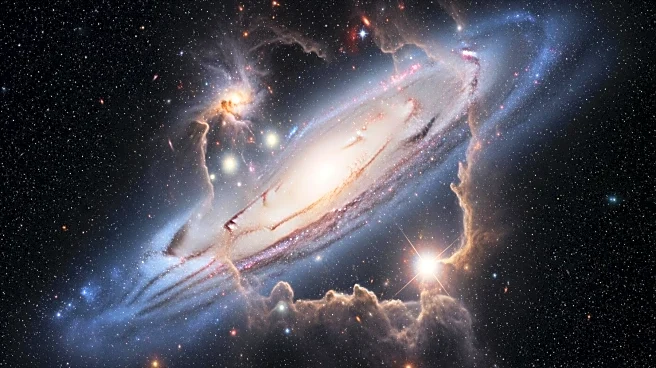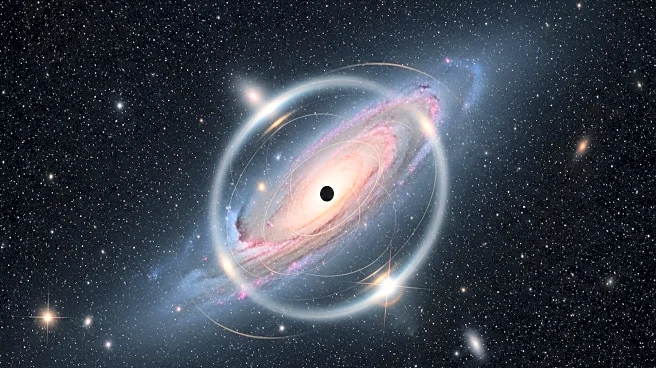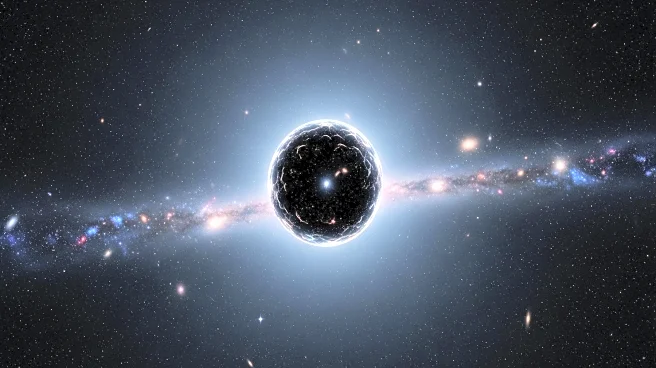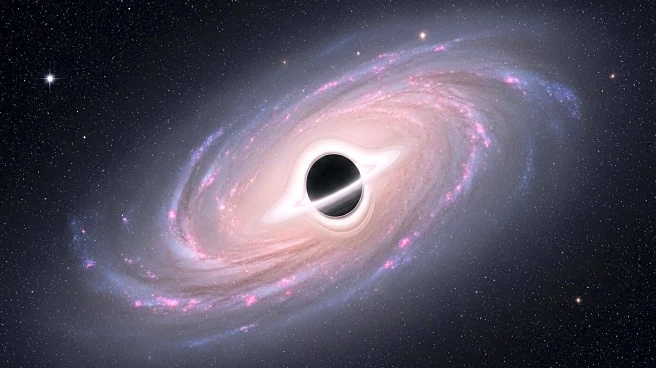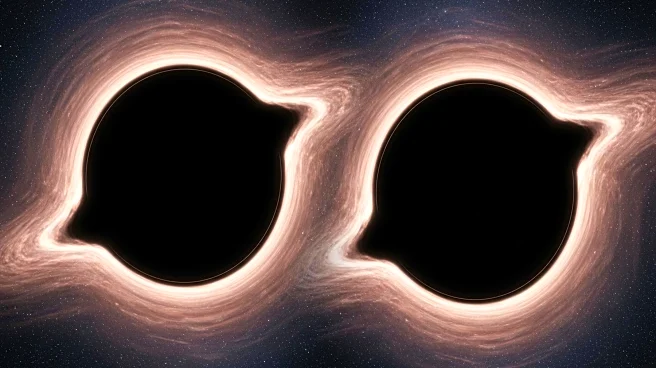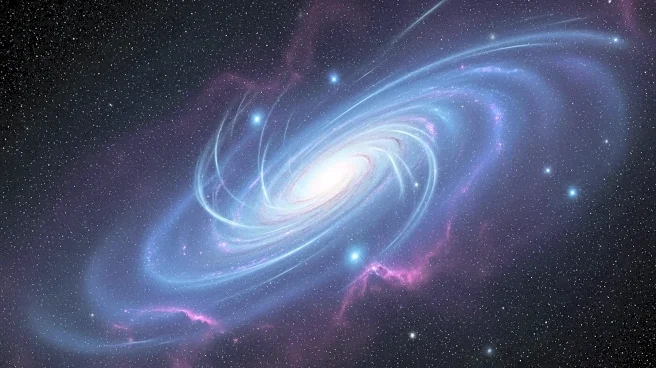What's Happening?
Astronomers have potentially identified the smallest clump of pure dark matter ever found, located 10 billion light-years away. This discovery was made while observing an Einstein ring, a form of gravitational lensing caused by a massive elliptical galaxy. The dark object, with a mass a million times greater than the sun, appears as an anomalous notch in the arc of radio emission from a compact symmetric object. The finding supports the cold dark matter theory, which posits that dark matter is composed of low-energy particles that can clump together through mutual gravity. The research was conducted by a team led by John McKean and Devon Powell, utilizing radio telescopes worldwide.
Why It's Important?
The discovery of this dark matter clump is significant as it provides evidence supporting the cold dark matter model, a leading theory in understanding galaxy formation. Identifying such low-mass objects is crucial for learning about the nature of dark matter, which remains one of the most elusive components of the universe. This finding could help constrain the properties of dark matter particles, offering insights into their behavior and interaction. The research could pave the way for further discoveries, potentially aligning observed data with theoretical models, and enhancing our understanding of cosmic structures.
What's Next?
The team plans to continue searching for more dark matter clumps to verify the consistency of their findings with existing models. Future observations and analyses will aim to determine whether additional clumps can be found and if their numbers align with theoretical predictions. This ongoing research could refine the understanding of dark matter's role in the universe and its impact on galaxy formation.
Beyond the Headlines
The discovery raises questions about the smallest possible size of dark matter clumps and whether they can exist without forming stars. Understanding these properties could have profound implications for the study of dark matter and the fundamental forces governing the universe. The research also highlights the challenges of detecting dark objects that do not emit light, emphasizing the need for advanced observational techniques.
